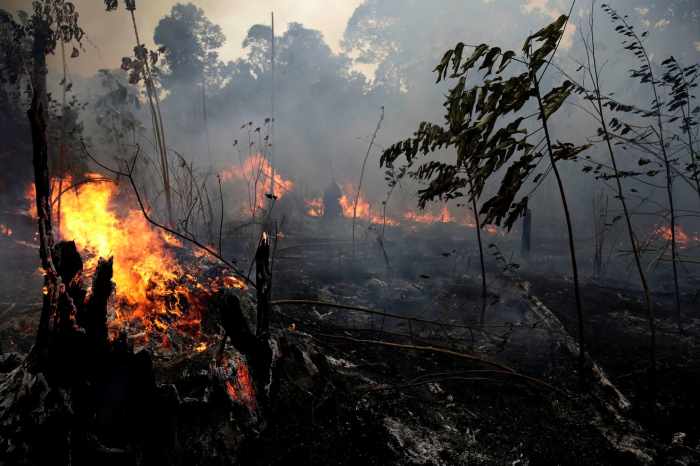The short answer is no, Earth would not lose 20 per cent of its oxygen if the Amazon Rainforest were lost. Many of us learned at school that plants produce oxygen as a by-product of photosynthesis, and thus it seems reasonable to think that one of the largest visible regions of photosynthesis on the planet might just be Earth’s prime oxygen factory. However, relationships between tropical forests and oxygen are a little more complicated. Sure, growing plants produce oxygen, and tropical rainforests are huge contributors, but it is important to remember that dead and rotting plants—as well as burning plants—consume oxygen to release carbon dioxide as a by-product during decomposition and combustion. Often the ratio between a plant producing oxygen in life and consuming oxygen in death is 1:1, so many atmospheric scientists don’t see the Amazon, Earth’s rainforests, or even Earth’s forests as a whole as net oxygen producers, at least in any appreciable sense, because all plants die sooner or later.
Earth’s excess oxygen—that is, the stuff that makes up about 21 per cent of Earth’s atmosphere—comes from marine algae. Marine algae bloom in the oceans, sitting on the surface and taking advantage of the nutrients that are stirred up in seawater and pulling in carbon dioxide from the atmosphere. While algae live, they use carbon dioxide to grow, and they release oxygen into the atmosphere. However, when they die, algae do not decompose on the ocean surface, so they do not draw from the atmosphere the same amount of oxygen that they produced in life. Instead, algae sink. Some dead algae consume oxygen dissolved in seawater and largely or completely decompose as they sink, releasing the carbon stored in their bodies into the water. However, others sink deep enough fast enough that they fall below the ocean’s oxygenated layers before they decompose in earnest. They land on the ocean floor mostly intact, so the carbon in their bodies stays put. Over millions of years, this process results in a net oxygen gain in Earth’s atmosphere.
Even though burning the Amazon won’t have an appreciable effect on oxygen levels, burning will add enormous amounts of carbon dioxide to the atmosphere, which will further strengthen global warming and produce more severe climate changes. And there are other very serious long-term consequences of destroying Earth’s most biodiverse region. Burning away the Amazon would condemn millions of living species to extinction and destroy their habitats. Many of these plants, animals, and other forms of life haven’t even been identified by science yet. It is thought that consumption of the whole of the Amazon by fire would change the region from thick multilayered forest to a savanna composed of scattered trees and tall grasses. While this change might appeal to livestock grazers and farmers (at least for a few years, until the nutrients of the rainforest’s thin soil are exhausted), it will put a jaw-dropping dent into the planet’s biodiversity. Although some hardy plants and animals would survive to become part of this new ecosystem, millions (possibly tens of millions) of species of insects and other invertebrates and thousands of species of plants and vertebrates (mammals, reptiles, and native and migrating birds) would not.
Read the original article on britannica.com.
More about: Amazonrainforest
















































